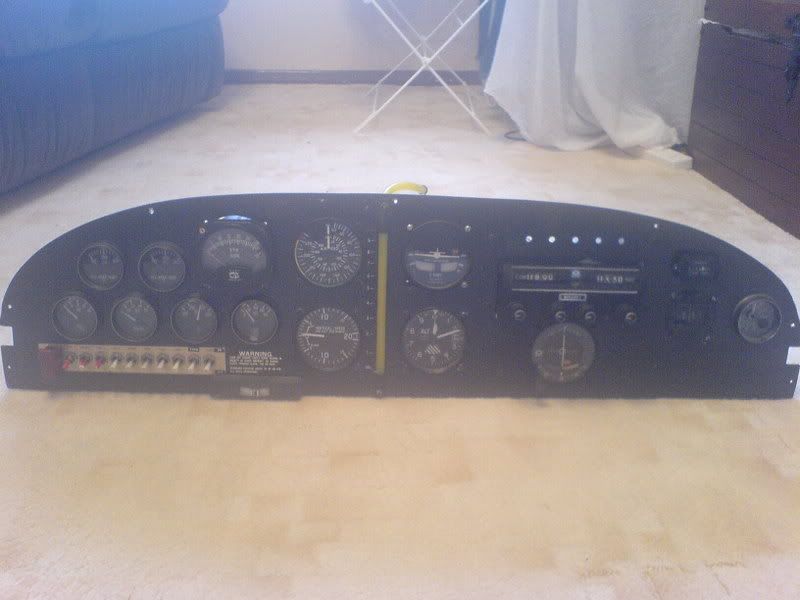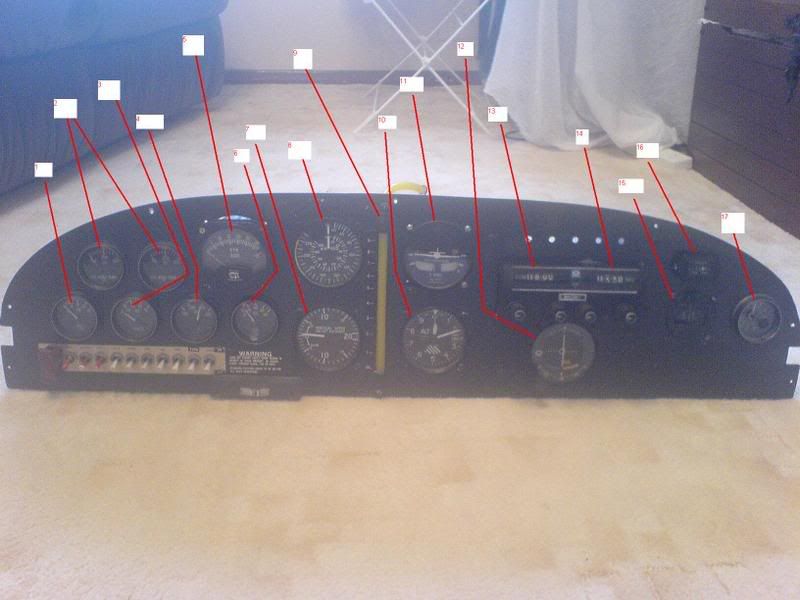Lots of people know about this contraption I'm knocking up, and many ask via PM every couple of weeks for the past several months.
Today I did something which made it look, for the first time, like it wasn't going to be a boat
I thought it might be time to share some photos of my main passion with all my friends on here
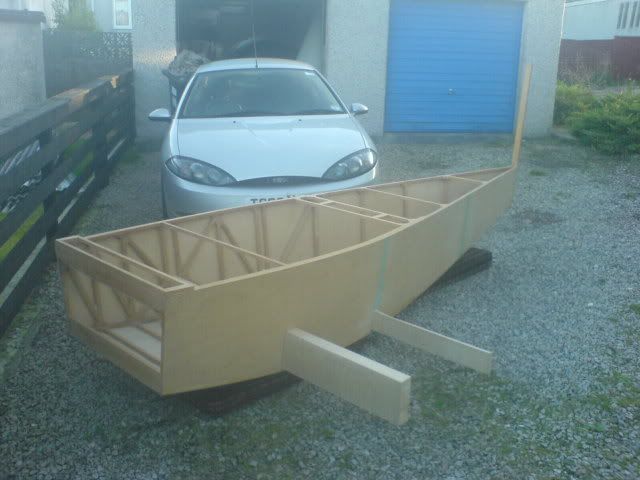
The stub wing spars dry fitted. I spent 5 hours today cutting the holes in the fuselage sides for these damn things. Doesn't look much but I'm so happy they're in
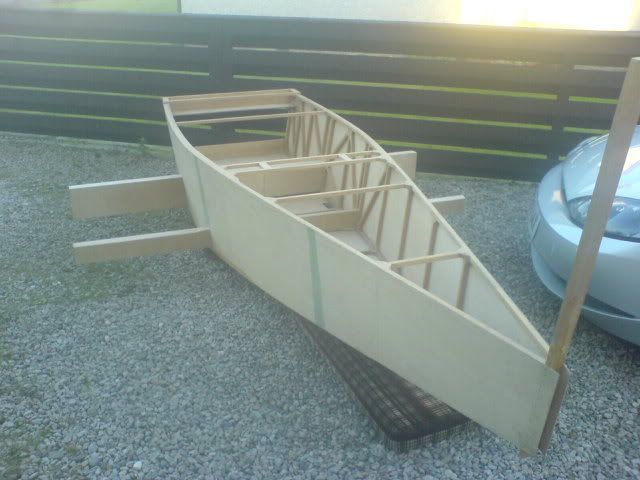
From behind, you might be able to see the chamfer cut on the rear spar. This is so that the spar matches the aerofoil section of the wing which will be build around it. The spars carry all the weigh of the aeroplane. This aeroplane has a design strength of +6g. Those wooden beams will carry 6 times the aircraft's gross weight, or, 2460kg. I hopefully will never need to ask that of my wings!
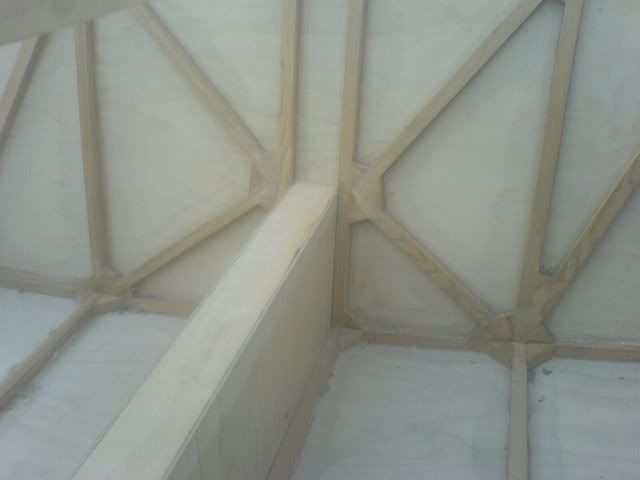
A quick view from inside. The spar centre section runs straight through the middle of the fuselage. The rear spar is just behind your bum, and the main spar sits just under your knees. Load spreaders will be added above the spars to transmit all the fuselage's weight (at 6g remember) to this glue join. The glues used are all epoxy based. All the 5/8" square wood you see is aircraft grade spruce. Note the absence of any defects in the wood. No knots, no grains pulling hand brake turns out the side of the length etc etc. The Plywood is to a standard set by Germanischer Lloyd who govern shipping standards of all things. The ply is 2.5mm thick 5 ply, and again is free from any defects, and uses phenolic resin glues. The ply is tested by boiling for a couple of hours prior to shear testing. This is Gucci stuff. It also costs a fortune.
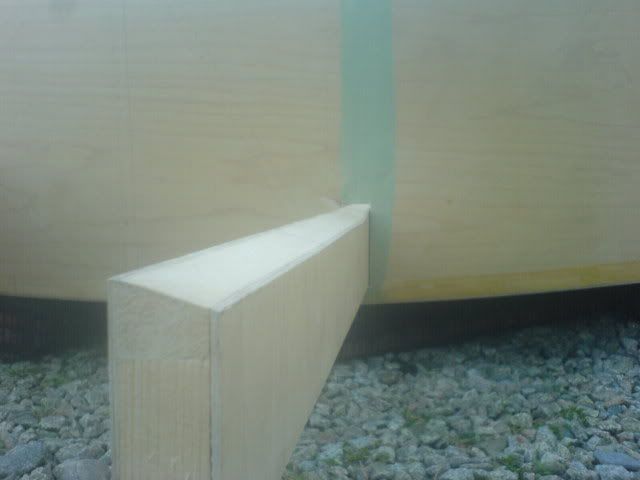
This is the rear spar. It doesn't carry a great deal of weight as such, it's main purpose in life is to stop the wings folding backwards at the 200mph top speed. The chamfer I mentioned is more evident here. Note the smooth transition to square at the wing root. Sharp changes in shape attract high stresses.
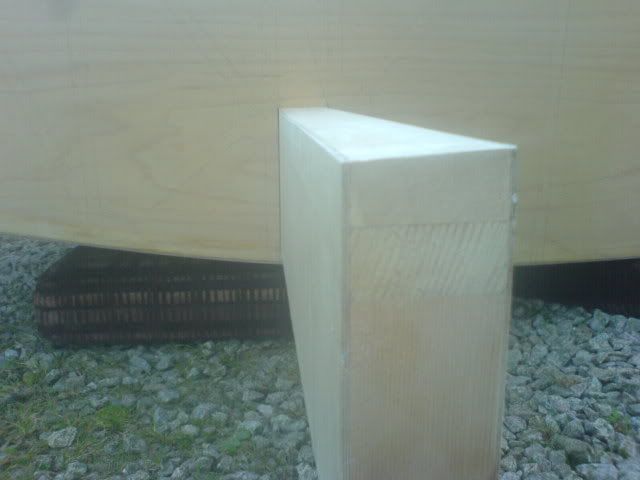
The front spar..... same again, but much much bigger in depth. This is the part which does all the work.
The outer wing panels bolt on via steel brackets bolted to these spars, and are removable for transportation on a trailer.

Photo borrowed from a fellow builder - I haven't got this far yet
Power is to be provided by a 2180cc Volkswagen Type 1 (who remembers that engine??) through a fixed pitch wooden propellor.
Instrumentation would make most car people cry so I wont show what's in the loft waiting to go in....
This here is the prettiest example of my aeroplane that I've seen - hope mine looks as good when it's finished!
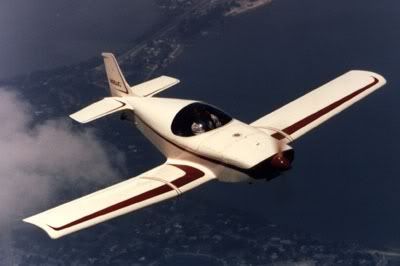
Today I did something which made it look, for the first time, like it wasn't going to be a boat
I thought it might be time to share some photos of my main passion with all my friends on here

The stub wing spars dry fitted. I spent 5 hours today cutting the holes in the fuselage sides for these damn things. Doesn't look much but I'm so happy they're in

From behind, you might be able to see the chamfer cut on the rear spar. This is so that the spar matches the aerofoil section of the wing which will be build around it. The spars carry all the weigh of the aeroplane. This aeroplane has a design strength of +6g. Those wooden beams will carry 6 times the aircraft's gross weight, or, 2460kg. I hopefully will never need to ask that of my wings!

A quick view from inside. The spar centre section runs straight through the middle of the fuselage. The rear spar is just behind your bum, and the main spar sits just under your knees. Load spreaders will be added above the spars to transmit all the fuselage's weight (at 6g remember) to this glue join. The glues used are all epoxy based. All the 5/8" square wood you see is aircraft grade spruce. Note the absence of any defects in the wood. No knots, no grains pulling hand brake turns out the side of the length etc etc. The Plywood is to a standard set by Germanischer Lloyd who govern shipping standards of all things. The ply is 2.5mm thick 5 ply, and again is free from any defects, and uses phenolic resin glues. The ply is tested by boiling for a couple of hours prior to shear testing. This is Gucci stuff. It also costs a fortune.

This is the rear spar. It doesn't carry a great deal of weight as such, it's main purpose in life is to stop the wings folding backwards at the 200mph top speed. The chamfer I mentioned is more evident here. Note the smooth transition to square at the wing root. Sharp changes in shape attract high stresses.

The front spar..... same again, but much much bigger in depth. This is the part which does all the work.
The outer wing panels bolt on via steel brackets bolted to these spars, and are removable for transportation on a trailer.

Photo borrowed from a fellow builder - I haven't got this far yet
Power is to be provided by a 2180cc Volkswagen Type 1 (who remembers that engine??) through a fixed pitch wooden propellor.
Instrumentation would make most car people cry so I wont show what's in the loft waiting to go in....
This here is the prettiest example of my aeroplane that I've seen - hope mine looks as good when it's finished!


